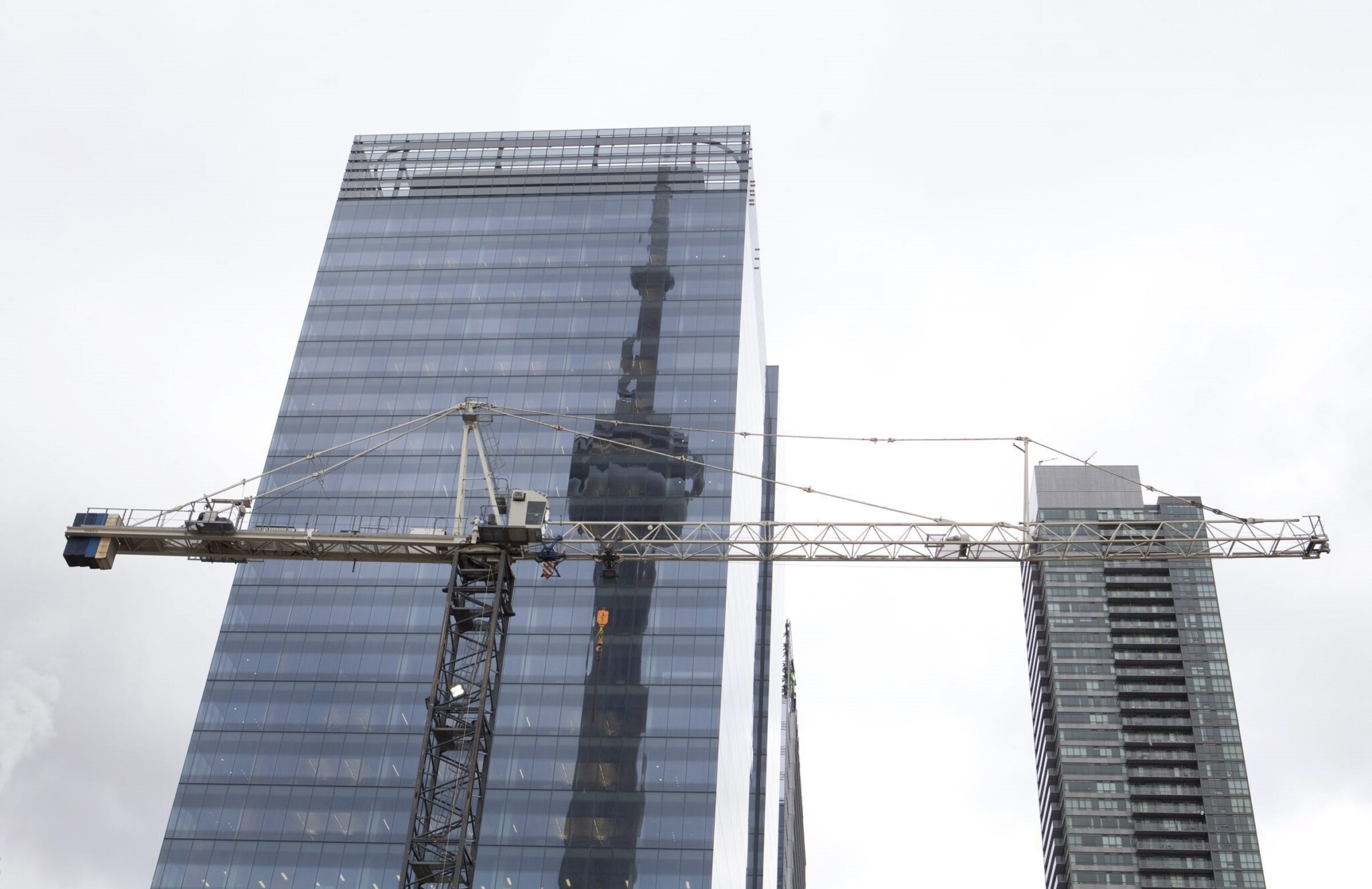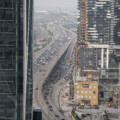As much as we would rather ignore Canadian architecture, that’s simply not possible. For better or worse — mostly worse — it is everywhere around us. Let’s be honest: Canada’s built environment is a mess. To be fair, architects don’t bear all the blame for the unremitting ugliness of the Great Fright North; they share responsibility with the misguided planners, politicians, both cowardly and corrupt, along with the venal developers who, by default, have become the nation’s city-builders.
Thanks largely to this unholy cabal, communities across Canada have been turned into an endless blur of nearly identical subdivisions and concrete, steel and glass towers, most of them clumsy, unadorned and wholly indifferent to their context as well as those who inhabit them. There are various causes: for starters, the market, especially the condo market, is primarily based on investors, not homebuyers. Typically, they want apartments that are small and cheap. Developers and architects are only too willing to oblige, housing crisis be damned.
Take the twin towers of the ICE condos in downtown Toronto; not only do they look like a pair of footless prosthetic legs, they are notorious as a “ghost hotel” known for out-of-control partying, gun fights, and even murder. Over at Jarvis and Dundas streets in midtown Toronto, another recent condo has become infamous for elevators that regularly fail, poor quality materials and botched layouts.
Is it any wonder Canadian architects have lost their creative spunk? Spending so much of their professional lives designing one cookie-cutter condo after another has turned their brains to mush. They don’t have time to worry about architecture. Serving a development industry drunk on years of uninterrupted profit flow has blinded them to the growing banality of their profession. Or is it a case of a marketplace that knows the price of everything and the value of nothing?
Worse still, at some point before the middle of the last century, architectural culture abandoned the time-honoured commandments of commodity, firmness and delight — especially delight — for the lure of “good enough, good enough.” Thus, Canada’s cities, to borrow Cory Doctorow’s phraseology, have been “enshittified,” with their quality rapidly declining over time Little wonder the most desirable neighbourhoods in any city are invariably the oldest.
Not that Canadian architects aren’t good at what they do. They are supremely capable. What they lack is originality, character and the ability to design outside the tiny boxes with which they have grown comfortable.

So it’s no surprise that we increasingly turn to foreign architects on those rare occasions when we want something special and engaging built, something more than competent mediocrity.
Even when it comes to residential construction, Canada’s architectural bread and butter, builders that incorporate design as a marketing asset are opting for global architects. For example, the most compelling condo development in Toronto is an innovative and entirely original project by celebrated Danish architect Bjarke Ingels. It proposes a wholly novel and utterly compelling alternative to the standard-issue tower, taking inspiration from Canadian architect Moshe Safdie’s beautiful stepped terraced apartments and featuring vertical gardens and glass bricks.

A rendering of the King Toronto housing complex in Toronto, designed by the Bjarke Ingels Group.
Photo credit: Hayes Davidson
Yes, international luminaries from Ingels to Jeanne Gang and Norman Foster are now designing residential developments in Canadian cities. They are the exception. When one wanders the downtowns of Calgary, Toronto, Vancouver and other cities, it’s still hard to tell one tower from another.
For many builders, architecture is merely the exterior — what a structure looks like. The idea that this is where a building should connect with the larger world and make its contribution to the public realm is not part of the calculus of mass development, laser-focused on down and dirty.
This has led to unprecedented architectural homogeneity; buildings and cities look more alike than ever. Except, perhaps, for the quirkiness of Montreal, the architectural character that makes towns and cities unique is being buried beneath layers of contemporary construction.
Perhaps it’s our self-effacing ways that make Canadian architects loath to stand out from the crowd. They go to great lengths to fit in, be polite and well-mannered, to the point of invisibility. That approach can succeed, but only to a degree. The civic duty of most buildings doesn’t extend much beyond filling a gap in the streetscape.
At the same time, a few are expected to go beyond such modesty: opera houses, train stations, city halls, concert halls, museums, art galleries and the like, have permission to draw attention to themselves. Indeed, that is their unspoken function.
No building better illustrates the failure of Canadian architects to grasp our desire for spectacle than Toronto’s proudly plain Four Seasons Centre for the Performing Arts. Opened in 2006, that city’s first dedicated opera and ballet house is also one of the biggest disappointments of the 21st century. Far from celebrating the performing arts, it looks like a warehouse with a stage attached. However well-intentioned, a bargain basement ballet and opera house misses the point.
Toronto’s most exciting new structures are the luminous Ontario Court of Justice by Italian master, Renzo Piano, and a second courthouse that shares space with the strikingly new St. Lawrence Market North building by Adamson Associates Architects and Rogers Stirk Harbour + Partners. Incidentally, Piano and Richard Rogers teamed up in the 1970s to produce the hugely influential Pompidou Centre in Paris.
In Calgary, the most compelling recent additions include the wonderfully urban Central Library (2018) by Snohetta Architects of Norway; the soaring Bow Building (2016) by London-based Norman Foster; Ingels’ twisting Telus Sky Tower (2022) and the joyfully colourful Peace Bridge (2012) by Spanish architect and sculptor Santiago Calatrava.
Meanwhile, Germans and Americans are leading Vancouver into its architectural future. Ole Scheeren, has two condo projects on the go, California’s Pritzker Prize winner Thom Mayne of Morphosis is designing the boldly eccentric new Lululemon headquarters.
Like the rest of us, Canadian architects can only sit and watch.
Get The Hub’s latest news and commentary on WhatsApp. Click here.








